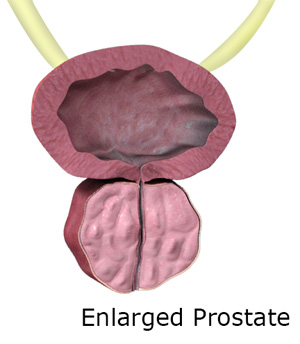
What is Benign Prostatic Hyperplasia (BPH) Management?
BPH management is a set of steps taken to treat benign prostatic hyperplasia.
BPH is a common disorder among aging men, where a continuous growth of the prostate gland results in hyperplasia and a number of symptoms related to urination.
Types of BPH Management
BPH management consists of various approaches. This includes both medical interventions as well as surgical resections of the prostate gland itself.
The approach in BPH management of any case is determined by your doctor depending on the patient's age, prostate size, the overall health of the patient and the severity of the symptoms.
Why is the BPH Management Required?
BPH can result in distress, as urination is one of the fundamental functions of life.
The symptoms can range from mildly annoying to severe enough that the patient would be afraid to drink fluids, in order to avoid urination and associated discomfort.
Who can Benefit from BPH Management?
Every case of BPH can benefit from management, however, it can be deferred in cases with no symptoms or very minor symptoms.
Stages of BPH Management
BPH management does not have stages, so let's cover some of the medications and surgical approaches. These include:
Medication (for cases with mild to moderate symptoms):
- Alpha blockers - They act by relaxing the neck of the bladder and surrounding tissues, making it easier to urinate.
- 5 - Alpha-reductase inhibitors - This group of drugs results in size reduction of the prostate gland, again, making urination easier
- Combination - A combination approach can also be given in certain cases.
Surgical approach
- Urolift for eligible patients. Sutures are placed into the prostate that effectively squeezes the urethra open
- Trans Urethral Resection of the prostate - TURP. A telescope is inserted via the urethra and the enraged part of the prostate gland is removed.
- Trans-urethral incision of the prostate or bladder neck incision - TUIP / BNI. In this procedure, only incisions are made in the prostate gland to make urination easier.
- Rezum - Using water vapour (steam) which is injected into the prostate causing the enlarged parts of the prostate to die and be reabsorbed by the body.
- Robotic Prostatectomy or Open Prostatectomy - Using a robotic approach or an open pubic or perineal approach, the enlarged part of the prostate gland is removed.
- Prostatic arterial embolisation – in some cases an angiogram of the prostate arteries can be performed and small beads inserted to block off the blood supply to the prostate to make it shrink.
In all approaches, a prostate gland MRI or biopsy may also be conducted to rule out prostate cancer, as the symptoms can overlap.
What should be expected after BPH Management?
There should be a noticeable improvement in urination and increased comfort level, improving the patient's quality of life. Improvement can take time.
What if BPH Management is not Undertaken?
If left untreated, the symptoms caused by BPH may continue to cause the patient mild or severe distress, depending upon the growth of the prostate gland, which can result in frequently worrying about having to urinate and constant visits to the bathroom when at work or attending events and at night.
In more advanced cases, complications such as frequent urine infections, an inability to pass urine at all (retention), bladder stone formation, and kidney damage can occur.




